In today’s world, education has become more important than ever. With the rise of remote learning, it is important to adapt to the changing landscape of education. This means making the most of the latest technology and finding effective strategies to navigate through it. In this blog post, we will explore some of the most effective EdTech strategies that can help students and teachers alike.
Table of Contents
- Navigating Remote Learning with Effective EdTech Strategies
- The shift to remote learning and the role of EdTech
- The benefits of incorporating EdTech in remote learning
- Choosing the Right EdTech Tools for your remote learning needs
- Enhancing student engagement through interactive learning platforms
- Personalized learning experiences with Adaptive EdTech Solutions
- Collaborative Learning and Communication Tools for remote classrooms
- Assessing student progress and providing feedback with EdTech
- Overcoming challenges in implementing EdTech for remote learning
- Training and professional development for educators in utilizing EdTech
- The future of education: Blended learning and the continued role of EdTech
- Final Thoughts
From online learning platforms to virtual classrooms, we will cover everything you need to know about using technology to transform education. So whether you’re a teacher looking for ways to engage your students or a student looking for new ways to learn, this article is for you. Join us as we explore the world of EdTech and discover how it can help you navigate the world of remote learning.
The shift to remote learning and the role of EdTech
The global pandemic has undoubtedly transformed the way education is delivered. With the sudden shift to remote learning, educators and students alike have had to adapt to a new virtual classroom environment. In this digital era, technology has emerged as a key player in facilitating this transition and ensuring a smooth continuation of education.
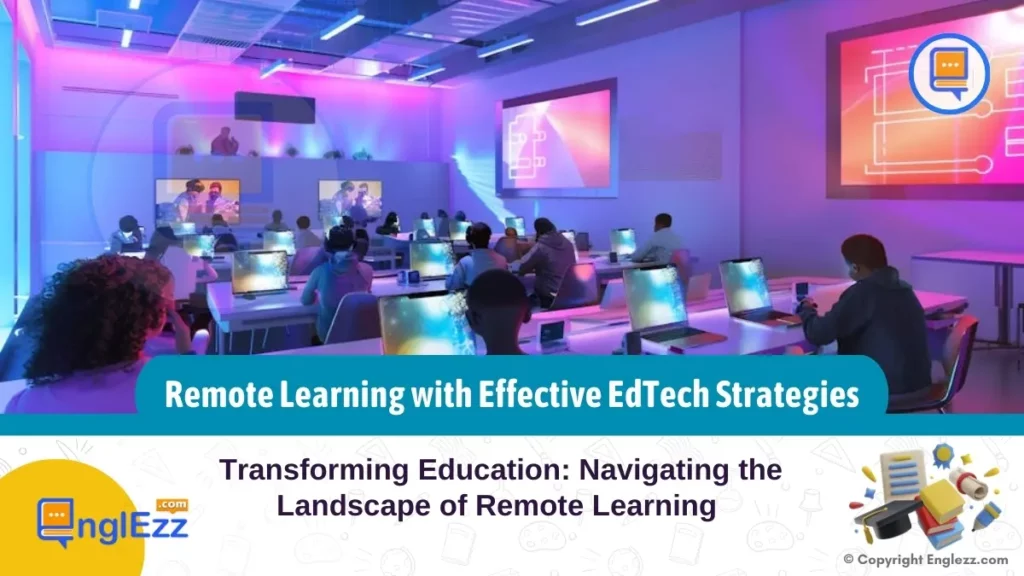
Enter EdTech – short for Educational Technology. EdTech encompasses a wide range of tools, platforms, and applications that support teaching and learning in a digital setting. From interactive learning platforms to video conferencing tools, EdTech has become an integral part of the remote learning experience.
The role of EdTech goes beyond just replicating traditional classroom activities in a virtual space. It offers unique opportunities to enhance the learning process, engage students in innovative ways, and provide personalized learning experiences. With the right EdTech strategies, educators can effectively navigate the challenges of remote learning and create an engaging and effective virtual learning environment.
In this blog post, we will explore the transformative power of EdTech in remote education. We will delve into various strategies that educators can employ to leverage technology and make remote learning a success. Whether you are an educator looking for innovative teaching methods or a student seeking effective study tools, this comprehensive guide will equip you with the knowledge and insights to navigate the world of remote learning with confidence and maximize the potential of EdTech. Let’s dive in and explore the exciting possibilities that lie ahead in transforming education through effective EdTech strategies.
The benefits of incorporating EdTech in remote learning
Incorporating EdTech, or Educational Technology, in remote learning brings a multitude of benefits to both educators and students alike. In today’s digital age, technology has become an integral part of our lives, and leveraging it for educational purposes can greatly enhance the remote learning experience.
One of the primary benefits of incorporating EdTech is the ability to personalize and differentiate instruction. With various EdTech tools and platforms available, educators can tailor their teaching methods to cater to individual student needs and learning styles. This level of customization ensures that students remain engaged and motivated, as they receive content and resources that are relevant and meaningful to them.
Another advantage of EdTech in remote learning is the accessibility it provides. Students can access educational materials and resources anytime, anywhere, as long as they have an internet connection. This flexibility eliminates barriers to learning, allowing students to study at their own pace and in their preferred environment. Additionally, EdTech enables students with different abilities or disabilities to participate fully in remote learning, providing equal opportunities for all.
Collaboration and communication are crucial aspects of learning, and EdTech facilitates seamless interaction among students and educators. Through virtual classrooms, discussion boards, and video conferencing tools, students can engage in collaborative projects, share ideas, and receive timely feedback. This fosters a sense of community and active participation, even in remote settings.
Furthermore, EdTech empowers educators with data-driven insights to monitor student progress and identify areas for improvement. Learning management systems and analytics tools allow educators to track student performance, assess their understanding, and adjust instructional strategies accordingly. This data-driven approach promotes personalized learning pathways and helps educators adapt their teaching methods to optimize student outcomes.
Incorporating EdTech in remote learning not only enhances the educational experience but also cultivates essential 21st-century skills. Students gain digital literacy, critical thinking, problem-solving, and technological proficiency while engaging in online activities and utilizing EdTech tools. These skills are valuable in preparing students for future careers and equipping them with the necessary tools to navigate the digital world.
Overall, the benefits of incorporating EdTech in remote learning are vast. By leveraging technology, educators can create engaging, personalized, and inclusive learning environments, while students can access resources, collaborate, and develop essential skills. Embracing EdTech is a transformative approach that holds the potential to revolutionize education and empower learners in the digital era.
Choosing the Right EdTech Tools for your remote learning needs
When it comes to remote learning, choosing the right EdTech tools is crucial for ensuring a smooth and effective educational experience. With the wide array of options available, it’s important to carefully evaluate your specific needs and requirements before making any decisions.
First and foremost, consider the curriculum and learning objectives of your educational institution. Look for EdTech tools that align with your desired outcomes and can support the subjects and topics being taught. Whether it’s interactive learning platforms, video conferencing tools, or virtual whiteboards, make sure the chosen tools enhance the learning experience and engage students effectively.
Another important factor to consider is the user-friendliness of the tools. Remote learning can already be challenging for students and teachers alike, so selecting intuitive and easy-to-use EdTech tools is essential. Look for platforms that offer clear instructions, simple navigation, and a user-friendly interface that both students and teachers can easily adapt to.
Additionally, consider the technical requirements and compatibility of the chosen EdTech tools. Ensure that they work well with the devices and operating systems used by your students and teachers. Compatibility issues can hinder the learning process and cause unnecessary frustrations, so it’s important to thoroughly test and evaluate the tools beforehand.
Furthermore, take into account the support and resources provided by the EdTech tool developers. Look for platforms that offer comprehensive documentation, tutorials, and customer support to assist both students and teachers in effectively utilizing the tools. Having access to a responsive support team can greatly enhance the remote learning experience and address any technical difficulties that may arise.
Lastly, consider the cost and scalability of the EdTech tools. While there may be free options available, it’s important to evaluate the long-term sustainability and potential limitations of these tools. Investing in quality EdTech tools may require a financial commitment, but it can greatly benefit the educational institution in the long run by providing a robust and effective remote learning environment.
By carefully considering the curriculum alignment, user-friendliness, technical compatibility, support, and cost of EdTech tools, educators can make informed decisions to enhance the remote learning experience and ensure that students receive a quality education regardless of physical location.
Enhancing student engagement through interactive learning platforms
In the realm of remote learning, maintaining student engagement can be a significant challenge. However, with the right EdTech strategies, educators can create interactive learning environments that captivate and inspire their students.
One effective approach is to leverage interactive learning platforms. These platforms provide students with opportunities to actively participate in their education, rather than passively consuming information. By incorporating elements such as multimedia content, gamification, and virtual simulations, these platforms foster a sense of exploration and discovery, making the learning experience more enjoyable and memorable.
For instance, a language learning platform may utilize interactive exercises and quizzes that allow students to practice their skills in a fun and interactive way. They can engage in virtual conversations, listen to native speakers, and receive immediate feedback on their progress. This not only enhances their language proficiency but also keeps them motivated and engaged throughout the learning process.
Similarly, interactive learning platforms can offer virtual laboratories, simulations, and virtual reality experiences for subjects like science and mathematics. Students can conduct virtual experiments, explore complex concepts through interactive visualizations, and gain a deeper understanding of the material. These hands-on experiences promote active learning and empower students to take ownership of their education.
Furthermore, interactive learning platforms often incorporate collaborative features, enabling students to engage in group projects, discussions, and peer-to-peer learning. Through online forums, video conferencing tools, and shared documents, students can connect with their peers, exchange ideas, and collaborate on assignments. This not only enhances their learning outcomes but also fosters a sense of community and social interaction, even in remote settings.
By embracing interactive learning platforms, educators can transform remote learning into an engaging and enriching experience. These platforms provide the tools and resources necessary to captivate students’ attention, promote active participation, and foster a love for learning. As we navigate the world of remote education, leveraging effective EdTech strategies becomes paramount in ensuring students remain engaged and motivated on their educational journey.
Personalized learning experiences with Adaptive EdTech Solutions
In today’s rapidly evolving educational landscape, personalized learning experiences have become a key focus for educators and students alike. The traditional one-size-fits-all approach to education is gradually being replaced by adaptive EdTech solutions that cater to the unique needs and preferences of individual learners.
Adaptive EdTech solutions leverage advanced technologies, such as artificial intelligence and machine learning algorithms, to gather data about students’ performance, learning styles, and areas of strength and weakness. This data is then used to tailor educational content and instructional approaches to match each student’s specific requirements.
By providing personalized learning experiences, adaptive EdTech solutions empower students to take ownership of their learning journey. They can progress at their own pace, delve deeper into concepts they find challenging, and receive targeted support to bridge any knowledge gaps. This individualized approach boosts engagement and motivation, as students feel more connected to the learning material and have a sense of control over their educational path.
Additionally, adaptive EdTech solutions offer real-time feedback and assessment, enabling teachers to identify students’ areas of improvement instantly. This timely feedback allows educators to intervene when necessary, providing targeted interventions and support to help students overcome obstacles and achieve their full potential.
Moreover, adaptive EdTech solutions can also foster collaboration and interaction among students. Through online platforms, students can engage in virtual discussions, collaborative projects, and peer-to-peer learning activities. This promotes social learning, critical thinking, and problem-solving skills, preparing students for the demands of the digital age.
Implementing adaptive EdTech solutions in remote learning environments requires careful planning and consideration. Educators need to select the right tools that align with their instructional goals and the needs of their students. Professional development and training should also be provided to ensure teachers are equipped with the necessary skills to effectively integrate and utilize the technology.
In summary, personalized learning experiences facilitated by adaptive EdTech solutions hold immense potential to transform education. By harnessing the power of technology, educators can create dynamic and engaging learning environments that cater to the diverse needs of students, fostering their academic growth and preparing them for success in the digital era.
Collaborative Learning and Communication Tools for remote classrooms
Collaborative learning and effective communication are crucial elements in ensuring a successful remote learning experience. With the rise of remote classrooms, it is essential to leverage the power of educational technology (EdTech) to foster engagement and interaction among students and teachers.
One of the most popular collaborative learning tools is Google Classroom. This platform allows teachers to create virtual classrooms, distribute assignments, provide feedback, and facilitate discussions. Students can collaborate on projects, share resources, and communicate with their peers and teachers in real-time. Google Classroom offers a seamless integration of various Google tools like Docs, Sheets, and Slides, making it easy for students to collaborate on assignments and presentations.
Another effective tool for remote classrooms is Microsoft Teams. This platform provides a comprehensive suite of features for communication and collaboration. Teachers can conduct virtual meetings, share files, and create channels for different subjects or groups. Students can participate in discussions, collaborate on documents, and receive personalized feedback from their teachers. Microsoft Teams also offers a secure environment with features like video conferencing, screen sharing, and chat functionality.
Padlet is another innovative tool that promotes collaboration and creativity in remote learning. It allows students to create virtual bulletin boards where they can share ideas, collaborate on projects, and showcase their work. Teachers can provide guidance, feedback, and facilitate discussions within the Padlet platform. With its interactive and visual interface, Padlet makes learning engaging and interactive, encouraging active participation from students.
Additionally, tools like Zoom and Webex have become essential for virtual classrooms, enabling real-time video conferencing, screen sharing, and interactive chat features. These platforms provide a space for synchronous learning, allowing teachers to deliver live lectures, conduct discussions, and engage with students in real-time.
By leveraging these collaborative learning and communication tools, remote classrooms can foster a sense of community, encourage active participation, and provide opportunities for meaningful interaction. These EdTech strategies empower both teachers and students to navigate the challenges of remote learning, ensuring an effective and engaging educational experience.
Assessing student progress and providing feedback with EdTech
Assessing student progress and providing timely feedback are essential components of effective education. With the integration of educational technology (EdTech) in remote learning, these tasks can be made more efficient and impactful.
EdTech tools offer various assessment features that allow educators to gauge students’ understanding and track their progress in real-time. Online quizzes, interactive assignments, and virtual simulations are just a few examples of how EdTech can facilitate ongoing assessment. These tools provide immediate feedback to students, enabling them to identify areas of improvement and make necessary adjustments to their learning approach.
Additionally, EdTech platforms often offer analytics and data tracking features, allowing teachers to gain insights into individual student performance as well as overall class progress. This data-driven approach enables educators to tailor instruction to meet the specific needs of each student, ensuring personalized learning experiences.
Furthermore, EdTech tools enable educators to provide timely and constructive feedback to students. Through the use of online discussion forums, collaborative documents, and multimedia presentations, teachers can assess student work and provide comments and suggestions in a timely manner. This promotes a continuous feedback loop and helps students understand their strengths and areas for growth.
By leveraging EdTech for assessment and feedback purposes, educators can not only streamline their evaluation processes but also enhance the learning experience for students. The use of technology allows for more efficient and comprehensive assessment strategies, while the immediate feedback empowers students to take ownership of their learning journey. As remote learning becomes more prevalent, integrating EdTech in these areas becomes increasingly crucial for transforming education.
Overcoming challenges in implementing EdTech for remote learning
Implementing EdTech for remote learning can present various challenges that educators need to overcome. One of the key challenges is ensuring equal access to technology and internet connectivity for all students. In many remote or underserved areas, students may not have reliable internet access or access to the necessary devices. This digital divide can hinder their ability to fully participate in remote learning.
To overcome this challenge, schools and educational institutions can explore options such as providing loaner devices or setting up community Wi-Fi hotspots. Collaboration with local businesses and organizations can also help in bridging the technology gap by providing resources or funding to support access to devices and internet connectivity.
Another challenge is the need for effective training and support for both educators and students in utilizing EdTech tools. Educators may require training to familiarize themselves with the various platforms and tools available, as well as strategies for integrating them into their teaching practices. Additionally, students may need guidance on how to navigate and make the most of the digital learning environment.
To address this challenge, schools can provide comprehensive professional development opportunities for educators, including workshops, webinars, and online courses. Peer-to-peer mentoring and support networks can also be established to encourage collaboration and knowledge sharing among educators. For students, clear and user-friendly tutorials, guides, and technical support should be readily available to help them navigate the EdTech platforms and troubleshoot any issues they may encounter.
Furthermore, ensuring the privacy and security of students’ data and online activities is crucial in remote learning. With the increased use of digital tools and platforms, it is important to have robust data protection measures in place to safeguard sensitive information and ensure compliance with privacy regulations.
Educational institutions should prioritize the selection of EdTech tools and platforms that prioritize data security and privacy. They should also educate both educators and students about best practices for online safety, including strong passwords, responsible online behavior, and awareness of potential cyber threats.
By actively addressing and overcoming these challenges, educators can effectively implement EdTech strategies for remote learning, providing students with the tools and resources they need to thrive in a digital learning environment.
Training and professional development for educators in utilizing EdTech
In today’s rapidly evolving educational landscape, incorporating educational technology (EdTech) into remote learning has become increasingly crucial. However, it is important to remember that technology is only as effective as the educators who implement it. To ensure successful integration of EdTech tools and platforms, providing comprehensive training and professional development opportunities for educators is paramount.
Embracing remote learning requires educators to familiarize themselves with various EdTech tools and understand how to leverage them to enhance student engagement and learning outcomes. Training sessions should focus not only on the technical aspects of using EdTech but also on effective instructional strategies that align with the tools being employed.
Professional development opportunities should be ongoing and tailored to meet the diverse needs of educators. This can include workshops, webinars, online courses, and collaborative learning communities where educators can share best practices and learn from one another.
Training sessions and professional development should cover a range of topics, including but not limited to:
- Familiarization with different EdTech tools and platforms: Educators should be introduced to a variety of tools and platforms that can enhance their teaching practices. They should learn how to navigate these tools effectively and utilize their features to create engaging and interactive learning experiences.
- Integrating EdTech into curriculum design: Educators need guidance on how to align EdTech tools with their curriculum objectives. They should learn how to identify the most appropriate tools for different subject areas and grade levels, ensuring that technology enhances the learning experience rather than becoming a distraction.
- Creating interactive and collaborative learning experiences: EdTech offers opportunities for students to collaborate, communicate, and engage with the material in new and exciting ways. Educators should be trained on how to design and facilitate meaningful collaborative activities using EdTech tools, fostering a sense of community and active participation among students.
- Assessing student progress and providing feedback: Effective use of EdTech enables educators to monitor student progress and provide timely feedback. Educators should be trained on how to utilize assessment tools within EdTech platforms and interpret data to inform their teaching practices.
By investing in training and professional development for educators, educational institutions can empower their teachers to effectively utilize EdTech tools and strategies, ultimately transforming remote learning experiences for students. Moreover, ongoing support and opportunities for growth will enable educators to adapt to the ever-evolving educational technology landscape, ensuring that remote learning remains engaging, effective, and accessible to all.
The future of education: Blended learning and the continued role of EdTech
As the world continues to evolve, so does the field of education. With the advent of remote learning, the future of education is being reshaped before our eyes. Blended learning, a combination of in-person and online instruction, has emerged as a promising approach to education in this new era.
One of the key components that enables successful blended learning is the use of educational technology, or EdTech. EdTech encompasses a wide range of tools and resources that support and enhance the learning experience for students.
In the past, EdTech was primarily seen as a supplement to traditional classroom instruction. However, with the shift to remote learning, its role has become even more crucial. EdTech tools now serve as the backbone of many educational programs, providing educators with the means to deliver engaging and interactive content to students.
The beauty of blended learning lies in its ability to combine the best of both worlds. Students can benefit from face-to-face interactions with their teachers and peers during in-person sessions, while also having the flexibility to access digital resources and engage in online activities.
EdTech plays a vital role in facilitating this blended learning approach. It allows students to access course materials, collaborate with classmates, submit assignments, and receive feedback, all through the use of digital platforms. These tools also enable personalized learning experiences, as students can progress at their own pace and explore additional resources based on their individual needs and interests.
Furthermore, EdTech provides teachers with valuable data and analytics, giving them insights into student performance and areas of improvement. This data-driven approach allows educators to tailor their instruction to meet the specific needs of each student, leading to better learning outcomes.
As we look towards the future of education, it is clear that blended learning and EdTech will continue to play a pivotal role. The integration of technology in education not only enhances the learning experience but also prepares students for the digital age they will be stepping into. By embracing these innovative strategies, we can transform education and create a more inclusive and engaging learning environment for all.
Final Thoughts
Navigating remote learning can be a challenging task, but with effective EdTech strategies, it becomes a transformative experience for both students and educators. This blog post has highlighted the importance of utilizing technology in education and provided valuable insights into implementing successful EdTech strategies.
By embracing these strategies, schools and institutions can create engaging and interactive virtual classrooms that foster student engagement, collaboration, and academic success. As we move towards a more digital era, it is crucial to leverage the power of technology to revolutionize education and ensure that no student is left behind. Together, let us embrace the potential of EdTech and shape the future of learning.

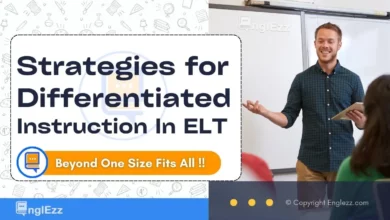
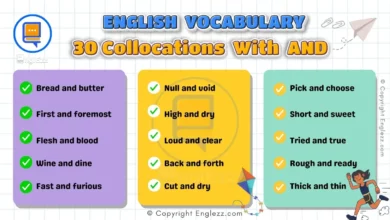

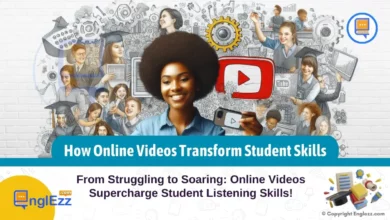
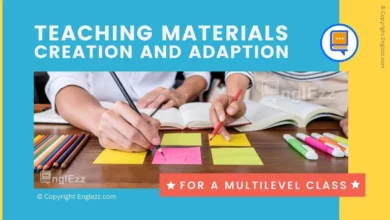



Remote Learning with Effective EdTech Strategies: Discover innovative tools and techniques that enhance engagement and success in your virtual classroom.